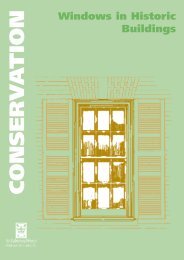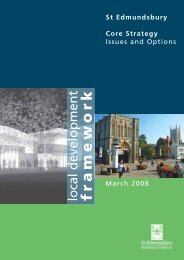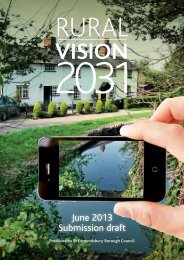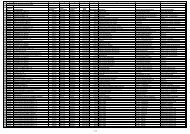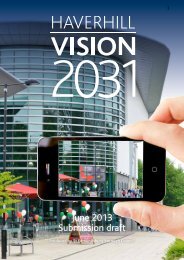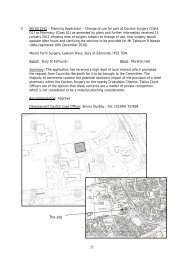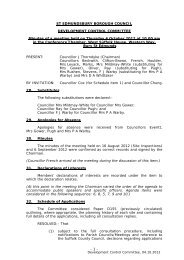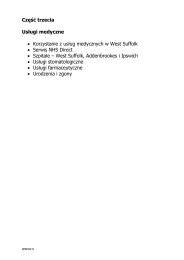St Edmundsbury Core Strategy (December 2010)
St Edmundsbury Core Strategy (December 2010)
St Edmundsbury Core Strategy (December 2010)
You also want an ePaper? Increase the reach of your titles
YUMPU automatically turns print PDFs into web optimized ePapers that Google loves.
community, leisure and social facilities;convenience goods shop;local employment opportunities; or,a good journey to work public transport service to higher order towns.4.56 We have identified 13 villages that meet these criteria. Within thesesettlements, some small scale housing and employment development will beencouraged. As a general guide, we consider that a limit of ten homes perdevelopment site would be appropriate, although more than one site might beidentified in the village during the plan period. However, the scale of growth inthe individual settlements will be dependent upon the local environmental andinfrastructure capacity of the settlement concerned. This is a matter that will beaddressed through the Rural Site Allocations Development Plan Document.Proposed development sites would normally be adjacent to existing housingsettlement boundaries.4.57 Further information on Key Service Centres and Local Service Centres can befound in Chapter 7 – <strong>St</strong>rategy for the Rural Areas.Infill Villages4.58 Villages that only have a limited range of services and less than LocalService Centres, are designated Infill Villages. In these villages, only infilldevelopment comprising single dwellings or small groups of five homes or lesswithin the designated housing settlement boundary would be permitted. Thiswould be dependent on other environmental and infrastructure constraints.Countryside4.59 A number of small settlements across the borough do not benefit fromhaving any services or facilities at all or have only limited services like a recreationground, village hall or a pub. In these circumstances, the residents predominantlyrely on the motor car to get to work, shops or use other facilities. We considerthat in these settlements the construction of further new homes is unsustainableand it is unlikely that additional development would provide sufficient furthercustomers to render the provision of a shop or other community facility viable.We therefore propose to remove the housing settlement boundaries of thosevillages which would prevent any further development from taking place unlessexceptional circumstances apply, for example replacement dwellings or dwellingsfor key agricultural workers. Maps illustrating those settlements where theboundaries have been removed can be found in Appendix 4.4.60 Within the borough there are some nationally important operational MODsites. We recognise the importance of defence both nationally and to the localarea and economy, and provide a positive framework for the continued operationof defence sites within the Borough. Subject to environmental and infrastructureimpact the Council supports the sustainable development of MOD sites to meetoperational requirements.Protecting Settlement Identity4.61 We recognise that the strategy for the further growth of Bury <strong>St</strong> Edmundsand Haverhill, in particular, could threaten the identity of neighbouring settlementsthrough potential coalescence. There is no designated Green Belt around thesetowns and therefore it is for the local planning policy frameworks to determine therole of land between settlements. It is not uncommon for this land to be under45




